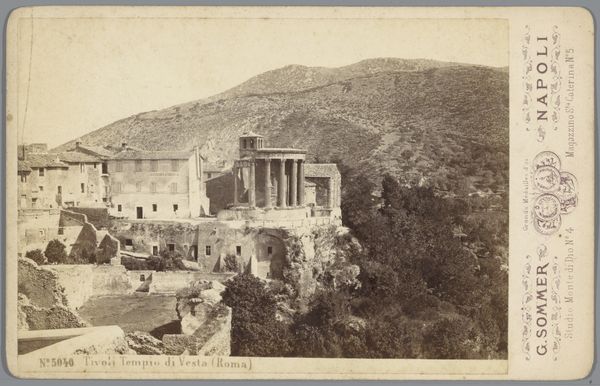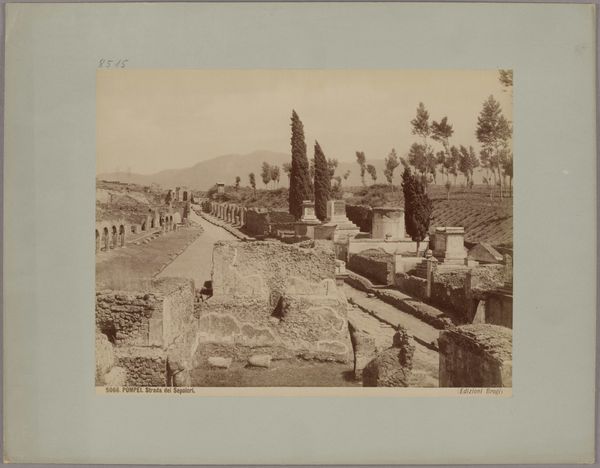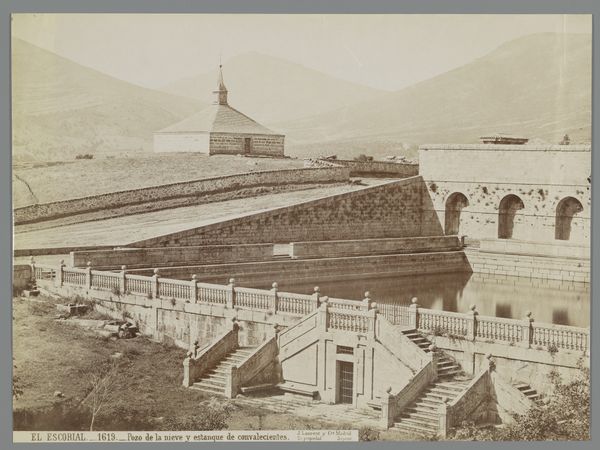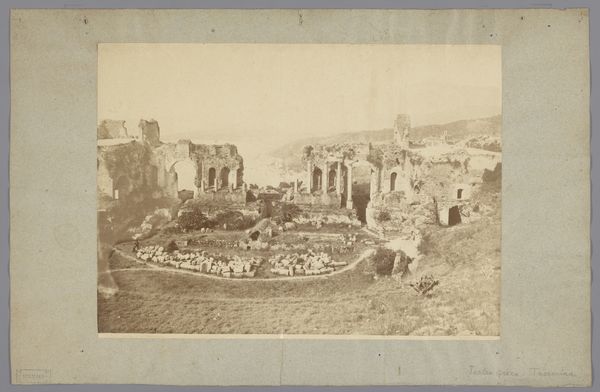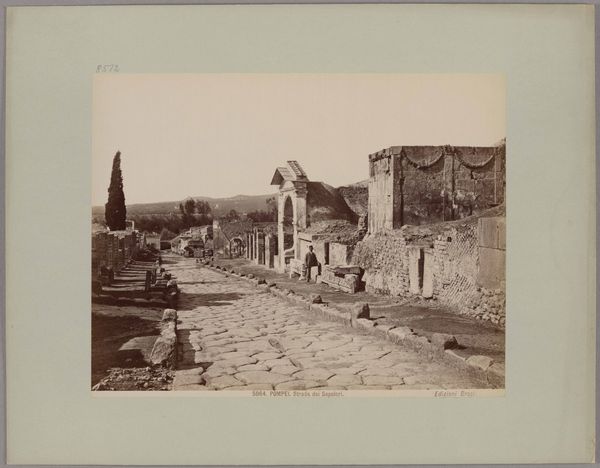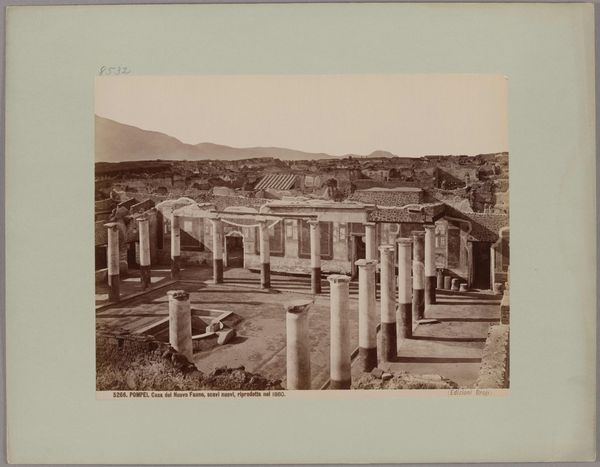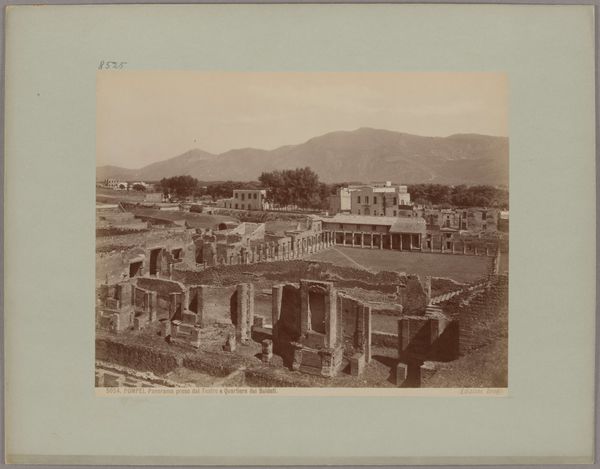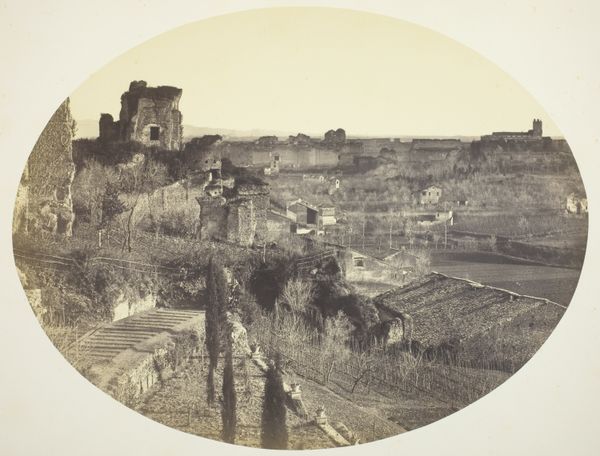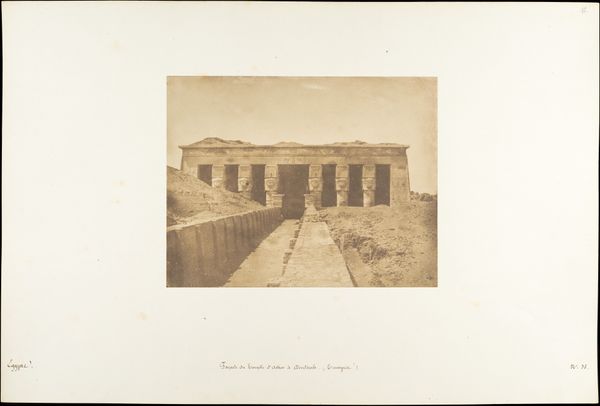
albumen-print, paper, photography, albumen-print, architecture
#
albumen-print
#
16_19th-century
#
greek-and-roman-art
#
paper
#
photography
#
ancient-mediterranean
#
albumen-print
#
architecture
Copyright: Public Domain
Curator: Here we have Giacomo Brogi's "Pompeii Tragic or Covered Theatre, No. 5035," an albumen print from around the 1880s or 1890s. Editor: There's such a haunting emptiness to it, don't you think? It looks deserted, and worn down... What sort of building are we looking at, actually? Curator: It depicts the ruins of a theater in Pompeii. Consider the production involved: the photographer carefully creating a chemical bath on light-sensitive paper, then developing the exposed photograph using light to capture the stage in detail... There were certainly material implications of his gaze. Editor: Absolutely, and its capture signifies so much about the context of 19th century imperialism: It evokes a melancholic perspective towards this lost civilization. In my view, Brogi positions the viewer as almost mourning the culture's sudden cessation. Is that a mountain in the distance? It looms over the tragedy, doesn’t it? Curator: Yes, Mount Vesuvius. The image, like the city it shows, carries so much geological weight. Each print relies on paper, made from laboriously processed plant fibers, then coated with an emulsion containing silver, light-sensitive silver salts – we can almost chart global trade and human industry through such work, can’t we? Editor: Very true. It speaks of empire, colonialism, of excavating ruins and laying bare histories. Who had access to the technologies to document in that way? Who benefits from its distribution as knowledge? Who and what is erased in the process of that specific form of documentation? And even today we are viewing the photograph in a museum – considering it from afar! It reminds one that, still, the historical wound remains largely untended. Curator: Exactly! It all underscores the social underpinnings of art and material consumption and raises compelling questions about its ongoing role as a transmitter of societal value, as well. Editor: Such reflections push our understandings toward a better, and perhaps even more just, reckoning of art and our shared historical fate.
Comments
No comments
Be the first to comment and join the conversation on the ultimate creative platform.
